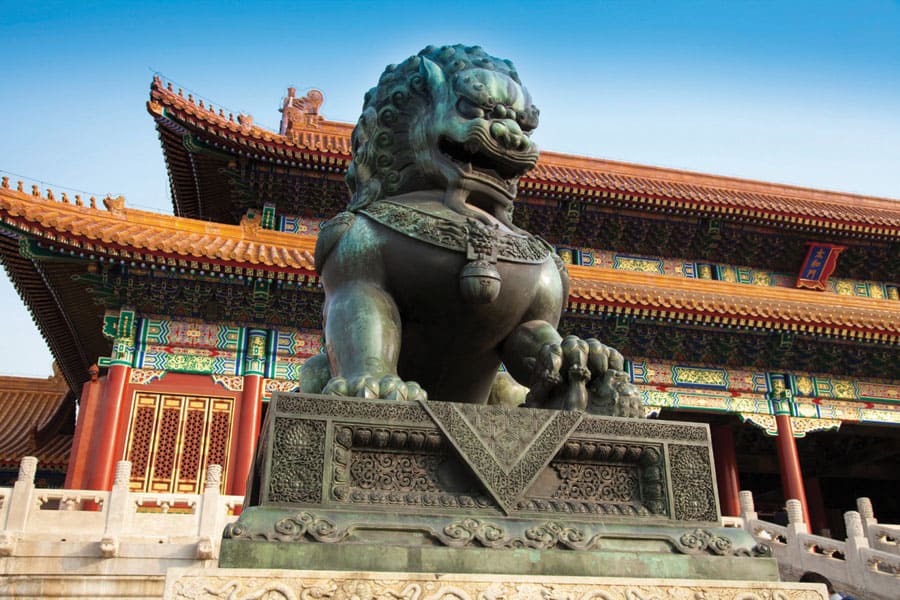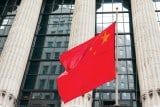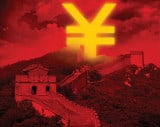Mark Godfrey charts the highs and lows of the Chinese market-driven economy and warns China watchers that it may get more volatile before it gets more normal.
It’s indeed ironic that the commentators, consultants and economists who decipher China for a living, were out in volume recently decrying the risk of corporate bond defaults in China. This follows the defaulting by solar equipment firm Chaori on its bonds. Some China hands have pointed to the default as the tip of the iceberg of corporate and local government debt defaults in China. Others have pointed to Chaori’s problems as the start of trouble in the important solar power equipment sector here. But neither is the case.
These are, after all, some of the same voices who in recent years called for the government in China to let firms default and let the market rule. Now that government is, out of necessity, starting to let the private sector – the key generator of employment and exports in China but the least serviced by the banking system – the China watchers seem unsure about what they once wished for.
Long-term trends
But volatility will become more of a reality in a more liberalised Chinese economy, provided of course that all the pledges made last winter by the Communist Party leadership are delivered on. China-watching economists will have to work much harder to separate the day-to-day noise, common in any major market-driven economy, from the longer-term trends.
Given the noise around Chaori, one would be forgiven for forgetting that dozens of corporations fail in other large economies, like the US, each year. It’s likely that several privately-owned real estate firms may go bust in the current downturn in China’s real estate market, even though demand still remains very strong by standards across the rest of the world.
But just as Chaori doesn’t mark the demise of the solar power sector, nor will the failure of a handful of developers necessarily portend the demise of China’s real estate market.
Likewise, lots of executives lining up expensive new product launches for the Chinese market are concerned about the impact of a perceived slowdown in the Chinese economy. What may look like a slowdown however may also just be China’s becoming a more ‘normal’ economy.
Capital consumption
Take the red herring about consumption. So many Westerners ask ‘why don’t the Chinese buy stuff?’ Well, they do. Spend a day walking and sitting in malls of Beijing, Chongqing or Dalian and you’ll see a nation of obsessive consumers. Indeed, in this officially atheist state, consumption appears to have replaced formal religion.
A lot of economists and consultants like to point to the GDP/consumption ratio as proof that China isn’t consuming like the US, which gets about 70% of its GDP from consumption (China gets less than 40%). But consider that fixed investment in China has been growing at a frenetic pace, a pace far too fast for consumption to catch up. The fixed asset investment growth for the first two months of this year came in at a record low – but was still 19.7%. It’s very hard to expect consumption, even as it grows steadily, to catch up with a figure like that.
China, in the last 30 years, has only known GDP growth, but in a more market driven economy, recessions will become an eventual reality.”
But look at the growth in catering and retail sales, both of them far outstripping anything in the region or the West. Real retail growth has been exceeding 10% for a decade, and looks set for 14% in 2014, which is several times the equivalent rate of any other large economy. Westerners have to realise that as China shifts to a more market driven economy – in line, coincidentally, with a lot of Western advice – business conditions here will become more volatile.
Interest rate liberalisation means banks will be able to charge more for loans, adding to the financing costs of corporations. That’s already happening. And China will start to let companies default on their debt – something local provincial government were previously loath to do, for fear of losing jobs or weakening confidence in their single-party rule.
Doubters like to point to slower GDP growth rates – 7.5% is slower than the 10% per year of a decade ago. But that’s the norm which has been embraced by China’s government. It’s the figure required to deliver enough growth in employment, arguably a more important figure than GDP growth with current policymakers.
Average incomes will continue to grow and minimum wages will go up 15% in most major cities this year, powering those aforementioned retail sales figures. So all the data points to is a continuation of the China growth story, even as China is also set to become a more normal – and volatile – economy.
That suggests to those worried executives that it’s a good time to launch products for the domestic market here. But the government’s recently found willingness to empower the market won’t be enough on its own to make China a ‘normal’ market economy. Legal and institutional capacity remain seriously substandard in China, largely for reasons related to political control.
The system to deal with the inevitable defaults and fall-outs that are normal in a more volatile, privately-owned economy, will require credible and strong courts and institutions to manage bankruptcies and defaults. These do not yet exist.
China in the last 30 years has only known GDP growth, but in a more market driven economy, recessions will become an eventual reality. One wonders how China’s legal system, in its current form, would be able to handle the inevitable tsunami of legal cases which comes with the unwinding of any boom.
Stabilisation
Many will be listening with glee to the protests of some of the world’s largest hedge funds who have been harping on about the new risk in the Chinese currency. Overseas investors – and political proxies – for a long time have called for the RMB to be allowed to move according to its true value.
China has allowed the RMB to gradually rise against the dollar and doing so has also improved local purchasing power. This is much to the delight of those who bet on a rising RMB. But a freer currency regime – which China has promised – should also mean more volatility, as currencies both rise and fall. When the RMB fell 2% early this year, the speculators were burned, and columns inevitably appeared calling for a less volatile RMB.
But if China is to be a more market driven economy, it will be a more volatile one too. Perhaps China watchers should be careful what they wish for.





